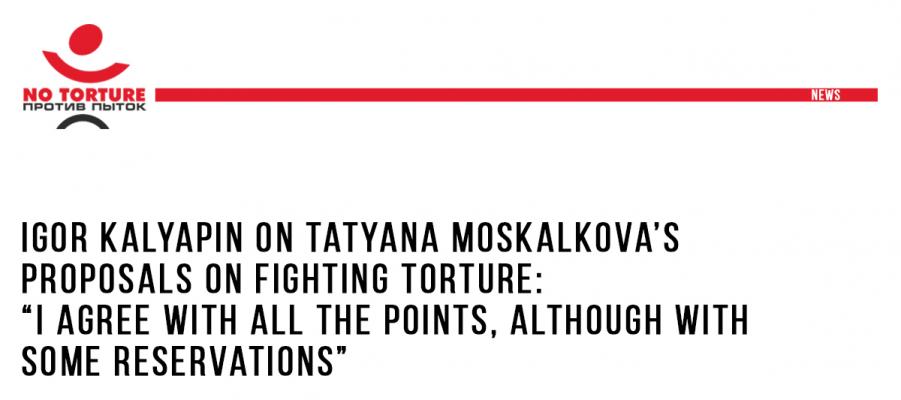
Chairman of the permanent commission of the Human Rights Council for civil participation in control of the law enforcement authorities, head of the Committee Against Torture Igor Kalyapin commented the proposals of human rights ombudsman Tatyana Moskalkova on the necessity of creating a national mechanism for identifying and preventing torture. In the opinion of the expert, in the execution of this mechanism it is necessary to involve not only the institute of the ombudsman but also the wide circle of actually working human rights defenders – representatives of independent NGOs.
“I agree with all the points that Tatyana Nikolayevna raised, although with some reservations.
Firstly, regarding “criminalization of convicts’ torture”. A question arises: why only convicts? Is a police officer torturing the apprehended person at the police department or temporary detention cell, any better than a jail-keeper torturing the convict at the penal colony or the detention facility? In my opinion, these crimes are absolutely identical in terms of their severity and public danger. By the way, when defining torture, the international law does not differentiate between the officers of various state agencies. The international law uses notions “the state agent”, “the person acting in the official capacity”.
Secondly, concerning the “strengthening of the civil monitoring of the penal institutions”. This is indeed very important to be done. Even more, it is the necessary condition of effectiveness of the state mechanisms of human rights defense. As it is shown by practice, where there is a normal civil and public monitoring, there the prosecutor’s office works effectively and agency control is on the alert, too… And if there is no public monitoring in place – prosecutor’s supervision is asleep, and the agency control is communicating the same: “All Quiet on the Western Front”. But it is not clear why Tatyana Nikolayevna mentions the relevance of public monitoring only with regards to “penal institutions”? What about temporary detention facilities? What about the police control rooms? I disagree that tortures are only applied at the Federal Penitentiary Service facilities. This is not true, and I can prove it with documents. That is why I think it is more logical to say “detention facilities”, regardless the color of the officers’ uniform.
And the third, creating a long-awaited national preventive mechanism (NPM) may be only welcomed. But I’d really like to hope that this mechanism will be formed in the regions not only from regional ombudsmen and their staff. In the number of the regions ombudsmen carry only one function – backup dancers for local authorities and law-enforcement. I hope that in the structure of the NPM there will be a place for competent representatives of independent NGOs”.